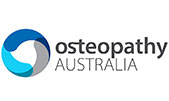
1300 722 206
Contact Us
Working with the BGRU, we have conducted research into:
The study aim is to assess the effectiveness and safety of the application of a novel treatment for low libido.
This study has finished recruitment and is in the data analysis phase.
A/Prof John Eden Principal Investigator
What is low libido or low sex drive?
Libido, also known as your sex drive, can vary from woman to woman and there is no right or wrong level. Many women will experience low libido at some time in their lives (1). Low libido can include absence of sexual thoughts or fantasies, loss of desire for, or interest in sexual activity and loss of response to a partner initiating sexual activity. For many women this can cause anxiety, frustration, guilt or sadness. A medical term hypoactive sexual desire disorder/dysfunction (HSDD) is used when women experience loss of sexual desire that causes them personal distress. HSDD can only be diagnosed after other factors such as depression, relationships issues and discomfort with sex have been excluded.
What is the study about?
This study is exploring a new nasal spray as a potential treatment for women with low libido or low sex drive that causes them personal distress (HSDD). The aim of the study is to measure the effect of 3 different doses administered daily, compared to placebo on sexual desire levels in women with low libido or HSDD. The study is also evaluating the treatment’s effect on the degree to which low libido or low sex drive bothers participants taking part in the study.
This study has finished recruitment and is in the data analysis phase.
Congratulations to WHRIA’s Dr Lauren Kite, the recipient of the Robert Wrigley Pain Research Scholarship, 2018-2019. This grant helped fund the study Randomised cross-over trial assessing the efficacy of adding hyaluronic acid to local anaesthetic in pudendal nerve blocks.
This study was to determine how the surgical insertion of a sacral neuro-modulation device has helped people with chronic pelvic pain in their everyday lives. 6 males and 46 females were contacted and the survey was completed by 43 people (26 to 77 yrs). The most common complaint was pelvic pain with 40 people reporting this. Bladder issues, bowel issues and sexual dysfunction were the other complaints asked about and were fairly evenly reported.
10 people had the device removed for reasons stated as infection, allergy, ineffective and one person reported a worsening of their pain. Overall 33 people reported an improvement in their quality of life, 5 said there was no change and 2 reported worsened quality of life. 31 said they would have it done again, 4 said they regretted having the procedure and 5 said that they did not regret it, but had found no benefit.
30 people reported their pain was better than before the neuromodulator, with 9 reporting improvement in bladder function, 12 in bowel function and 8 in sexual function. Open-access published article can be viewed here.
The study aim is to assess the effectiveness and safety of a new medication to treat frequent hot flushes and night sweats in women who have a history of or current breast cancer. Recruitment is now complete and is now in the data analysis phase.
WHRIA has completed recruitment for a clinical trial of Endometriosis –Associated Pain. This is a world-wide study and is now in the data analysis phase.
The purpose of this study was to determine the outcomes after pudendal nerve release for pudendal nerve entrapment, looking at daily function as well as pain reduction.
The research team has carried out tests of hormonal and non-hormonal therapies for the control of hot flushes, night sweats and sleep disturbance. We have also been engaged in a long-term study into the control of hot flushes to enhance quality of life following breast cancer treatment.
We have conducted studies into the efficacy and tolerability of new contraceptive devices and techniques, and trialled a new oral contraceptive pill. One of the contraceptive devices we developed and tested on 86 women over five years has been given FDA approval in the US.
Over a five-year longitudinal project (1000 women screened, 100 recruited) we studied the effect of hormone therapy on the occurrence of spinal fracture among post-menopausal women with osteoporosis. We have also done research into the efficacy of various drugs designed to prevent menopausal bone loss.
We have conducted several testosterone patch studies, a vaginal oestrogen study and a study of the effects of a non-hormonal therapy on vaginal dryness and painful sexual intercourse.
We are currently conducting pioneering research into the treatment of pelvic pain, uterine fibroids and endometriosis – including the development of an endometrial cell test, and a study of the efficacy of long-term use of botulinum toxin in relieving pelvic floor muscle spasm.
We have run studies of diabetes and weight loss, lipid-lowering agents, and the efficacy of complementary therapies in reducing anxiety.
If you’d like a full list of our research publications, please see our Research Team.
WHRIA has been at the forefront of the development of a number of new, innovative methods for treating different aspects of women’s health.
We trialled a new female sterilisation method that uses the Adiana trans-cervical device. EASE is a multi-centre, prospective evaluation of the Adiana System for trans-cervical sterilization using electro-thermal energy, in women aged 18-45.
We tested the safety and preliminary efficacy of the Miniaturo™-I system for the treatment of patients with urinary urge incontinence.
We conducted a preliminary safety and efficacy study into the VizAblate system for the treatment of uterine fibroid tumors.
With this study, we defined the pharmacokinetic properties of lignocaine gel applied topically for minor gynaecological procedures.
Painful sex. Low libido in premenopausal women.
If you have a specific enquiry for our WHRIA specialists
Click Here








© 2025 Women's Health & Research Institute of Australia. Privacy Policy | Terms of Use | Website by Phil Kurth